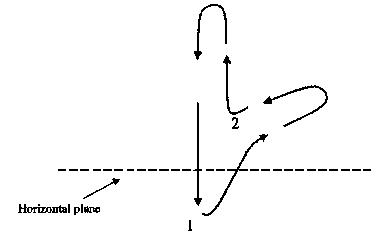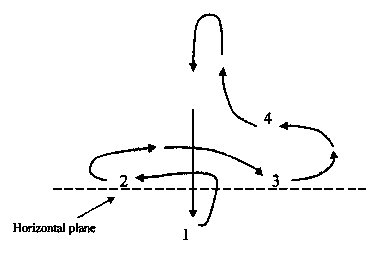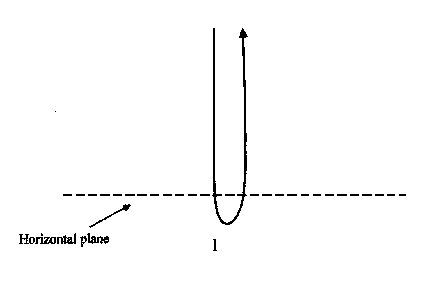Introduction
The One Pattern
The Two Pattern
The Three Pattern
The Four Pattern
Many readers will be tempted to skip this section, thinking that they are familiar with just about everything they need to know about the topic. After all, most musicians have spent so many years watching others conducting the two, three and four patterns that is seems almost too easy to imitate them.
There is plenty of controversy about conducting techniques. So much so, in fact, that some conducting courses include assignments in which students are required to read rival conducting texts and make lists of the various points of disagreement. Even so, it seems appropriate to begin this section by outlining a few traditional guidelines for conducting beat patterns often found in the literature.
Before practicing these patterns it is also a good idea to revise the points on stance and posture noted earlier. Stand up straight with an air of confidence and check that the baton is being held correctly. Then place the hands in the ready position and make eye contact with the performers. And finally, remember to inhale while executing the preparatory beat.
The one pattern is often used in very fast 2/4, 3/4 and 3/8 time signatures. It appears as a series of downbeats with a single rebound as shown in the accompanying diagram.
Make sure that there is no suggestion of any subdivision or any other extraneous movement that might lead to confusion on the part of the players. Ensure also that the beat does not become too oval or U-shaped. Otherwise, it will be difficult to identify the ictus clearly. For reasons of clarity, the diagram omits the preparatory beat, as do all subsequent illustrations. However, the preparatory beat should nevertheless be employed when beginning the pattern.
The most common two pattern is designed to produce a heavy accent on the first beat of the bar and a lighter one on the second. It is used in both 2/4 and 6/8 meters. Notice that the rebound from the first beat travels off to the conductor’s right, not to the left. This makes it possible for the second beat (effectively the last beat in the pattern) to travel upwards from the same direction as in the other metric patterns.

Some conductors augment the rebound angle from the first beat closer to 90 degrees, hugging the horizontal plane. This can often be highly appropriate, particularly if the music is of a more flowing character. A marcato style, on the other hand, generally demands an even more angular approach than the one given here.
The three beat pattern is perhaps best envisaged as a triangle, and is used in ¾, 3/2, slow 3/8 and fast 9/8 meters. There are, of course, various opinions about how to conduct a three pattern. Some conductors prefer having all three beats occur in the same place (an approach we rejected earlier on the grounds that it could cause some confusion), while others prefer each ictus to be positioned slightly higher than the one before it.

The style illustrated here is commonly referred to as the modified classical style. This places the ictus of the downbeat just below the horizontal plane so that it is slightly lower than the ictus that follows. The idea is to make the downbeat more prominent and thus easier for the performers to follow. Remember that each ictus should be indicated by a momentary flick of the wrist executed in such a way that the flow of the baton is not interrupted.
The four pattern is used most often in 4/4, 4/2 and fast 12/8 meters. Just as there are various schools of thought about the best way to execute a three beat pattern, so there are various opinions about how a four beat pattern should be conducted. In fact, much that has already been noted about differences of opinion regarding the three beat pattern also applies to the four. Notice once again how the downbeat in the diagram crosses the horizontal plane. 
One point to keep in mind when conducting a four pattern is not to allow the tip of the baton to move inwards towards the body, particularly during the execution of the second beat. Otherwise, the players on the conductor’s right will have difficulty identifying the second beat ictus. Remember also to keep the last beat of the pattern essentially the same as in the 2/4 and ¾ patterns. This provides and important element of consistency.













